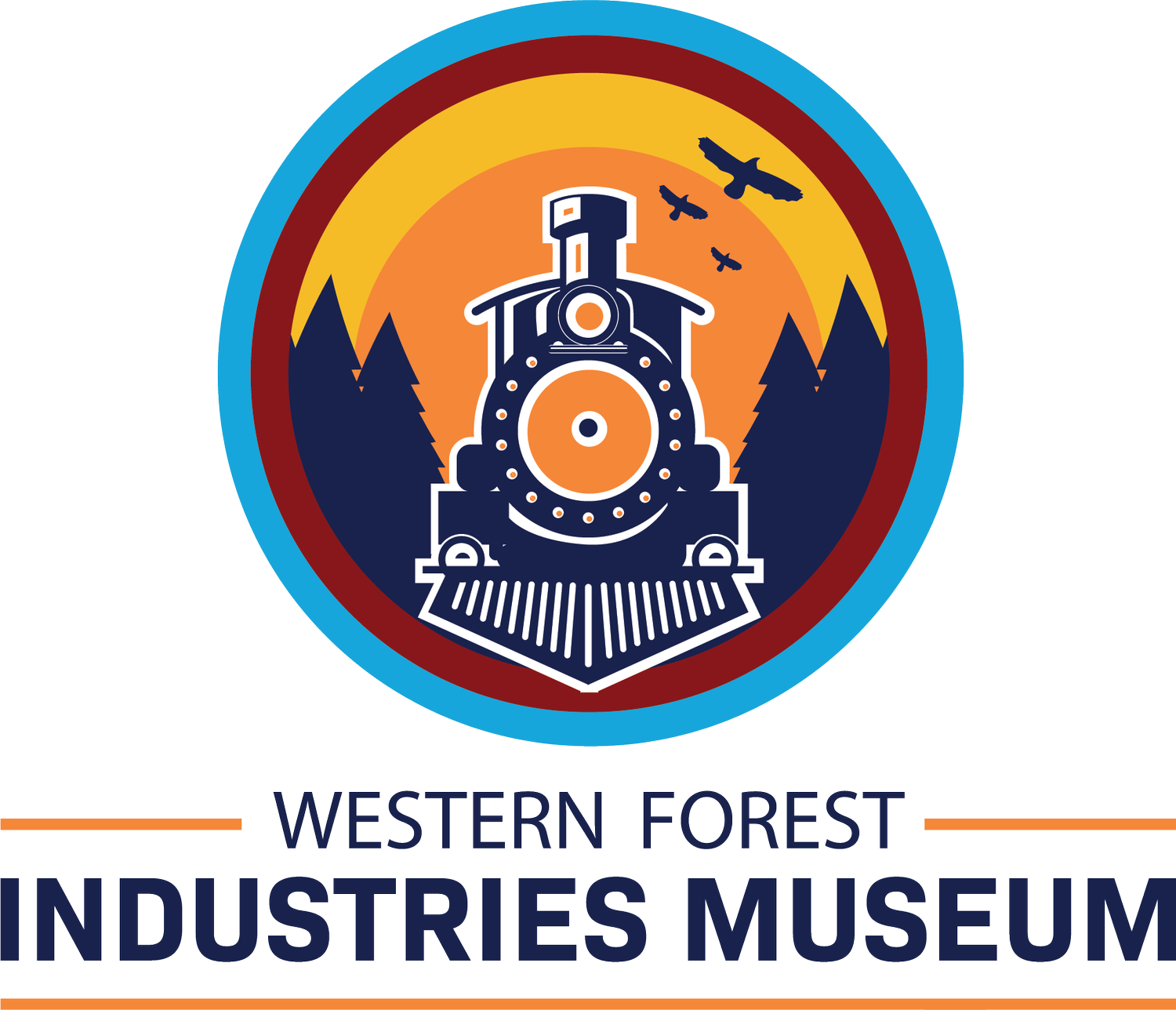MRSR Porter No. 5
The H.K. Porter Company, based in Pittsburgh, PA, constructed the Porter 2-8-2 #5 locomotive in February 1924 with construction number 6860. The engine is one of the largest Porter locomotives ever constructed, a 2-8-2 Mikado type oil burning locomotive, operating at a psi of 200, it has 18” 24” cylinders and delivers 26,435 lbs. of tractive effort. The locomotive was originally ordered by the Flora Logging Co., for use on their Carlton & Coast subsidiary.
Known for building durable little industrial steam locomotives, by the 1920s logging operations had expanded, necessitating larger, more powerful locomotives that could haul longer trains greater distances. Porter began to compete with the “industry standard” Baldwin Locomotive Works and American Locomotive Company and began construction of their 2-6-2 Prairie tender-type locomotives, and later, the 2-8-2 Mikado tender-type locomotives, such as Porter #5, making her one of the largest Porter locomotives ever constructed.
In 1940, C&C was abandoned and most of the railroad scrapped for the war effort. Porter No. 5 is the only surviving locomotive from the Carlton & Coast Railroad – it was sold to the Port of Grays Habor for use as a switcher at the Hoquiam, WA docks where her number was changed from #55 to #5. In 1959, the Port switched to diesel engines and Porter No. 5 was put up for sale.
The few steam locomotives that survived WWII’s scrap drives usually met their fate in the 1950s. The #5 was a rare exception, and was purchased by the Schafer Brothers of Brady, WA, who operated a huge logging operation in Montesano, Washington. Began in the early 1900s, by the 1940’s, the Schafer Brothers had over a dozen steam engines operating on their logging railroads and one of them, #4, was a favorite of Carl, one of the 3 Schaefer brothers. All their logging steam engines were scrapped in the 1950s so after retirement, when Carl saw Port of Grays Harbor #5, the near twin to his favorite engine #4, he purchased it to be put on display on their game farm near Montesano, WA. Stored outside in salt water for decades, the locomotive’s condition had deteriorated considerably. In the early 1980’s, Mt. Rainier Scenic Railroad purchased the locomotive as an intended candidate for restoration. When restoration efforts began, and the engine’s tender was shipped off for sandblasting – the entire tender disintegrated. The locomotive was only in marginally better condition, but was eventually restored to service. A Vanderbilt-style tender from the Northwestern Pacific Railroad in CA was acquired and put to use behind the 5. Because of her power, durability, and ability to pull long trains considerable distances, Porter #5 was the main workhorse of MRSR for over two decades.
Porter #5 was used in tourist service for as long as it was used in logging and freight service. Mt. Rainier Scenic Railroad was one of the earliest heritage railways founded in the United States, in 1980, while many heritage operations popped up, largely led by volunteers in the 1980s and 1990s. The rebuild of MRSR Porter #5 represents early efforts by grassroots volunteer-led organizations to preserve locomotives and railroads that were literally rusting away to nothing. Some of Mt. Rainier Scenic Railroad’s early volunteers were former loggers and engineers from the Milwaukee Road and the line when it had been operational. The rebuild of the 5 provided motive power (along with MRSR’s Climax) to allow for additional clearing and logging of the line, which enabled the start of tourist service. Many heritage railroad legends such as Jack Anderson, Blackie Mosier, Harold Borovec, Tiny Freeman, and more cut their teeth in the heritage railroad / tourist railroad world with the restoration of Porter No. 5, creating an example used nationwide of what was possible and a sustainable business model (a combination of volunteers/paid staff) that used ticket sales to fund further restoration projects. As Mt. Rainier Scenic Railroad progresses with the restoration of Porter No. 5., volunteers are working on compiling a history of the early days of our heritage railroad, as well as the people that worked on the initial restoration of the engine – allowing a broadened narrative to be part of the engine’s history.

